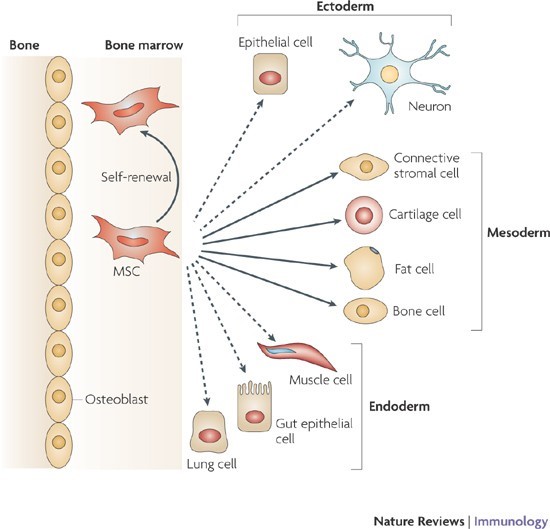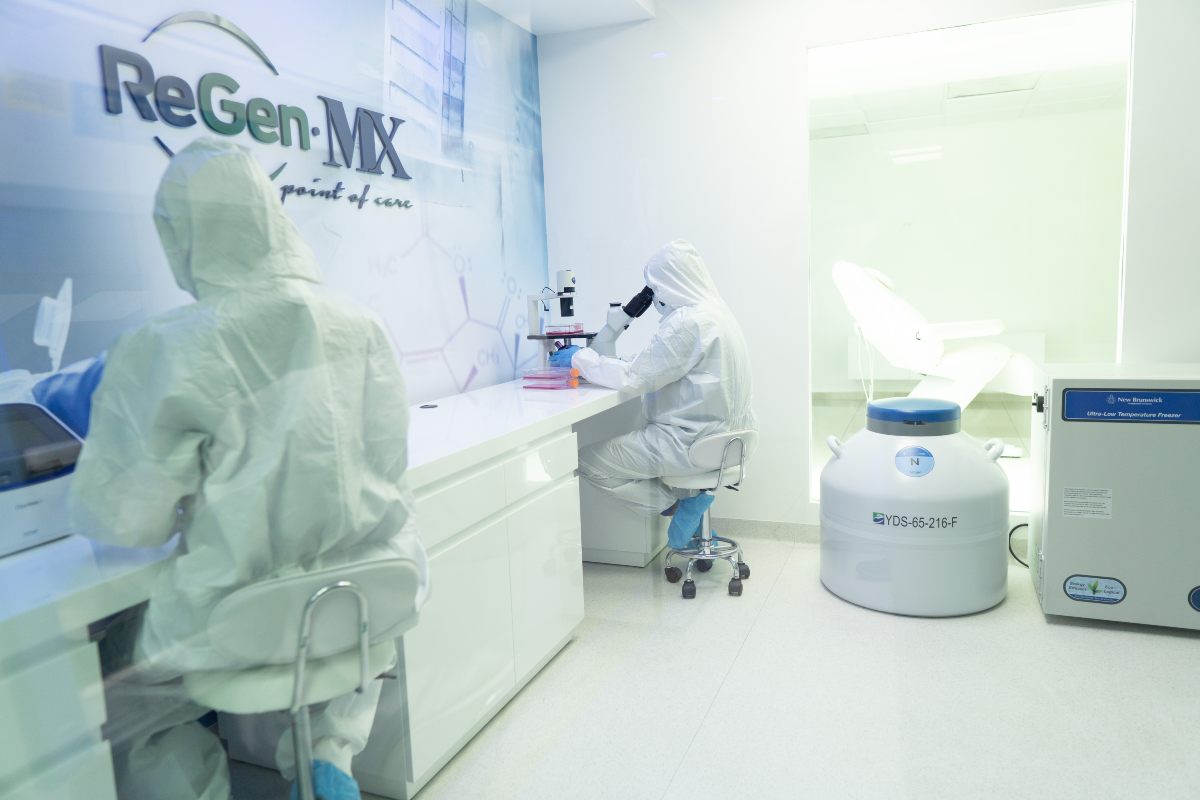What is the success rate of stem cell therapy for knees? Continue reading to learn more!
If you are suffering from consistent knee pain, you have likely already considered some of the most popular treatments available on the market – from knee replacement and knee surgery to physical therapy, medications, injections, and even holistic therapies such as acupuncture.
The options are endless!
And, depending on the stage of your research, you might have also considered some alternative options, such as stem cell treatments for knee pain – which provide effective results while being less invasive, cheaper than surgery, and with little to no recovery time.
However, as with every innovative and groundbreaking treatment that emerges on the market, many questions may arise.
Which is completely understandable – where health is concerned, it’s important to be as informed as possible so you can make the best choice for your well-being.
In our previous articles, we answered some key questions, such as:
- Can You Regrow Knee Cartilage With Stem Cells?
- Where Can I Get A Stem Cell Treatment For Knee Pain?
- What Is The Cost of Stem Cell Knee Therapy?
- Can Stem Cells Repair Joint Damage? 5 Key Considerations
In this one, we will discuss one of the most important questions that people ask when it comes to using stem cells for knee pain – what is the success rate of stem cell therapy for knees?
What Is The Success Rate of Stem Cell Therapy For Knees? Clinical Outcomes & Comparative Studies
When it comes to the success rate of stem cell therapy for knees, keep in mind that the answer is not as simple as it seems – it will depend on several factors that we are going to discuss in this section.
But first, let’s take a look at some clinical outcomes and comparative studies that have shown a huge success of mesenchymal stem cell (MSC) therapy for knee osteoarthritis:
Clinical Outcomes
JEO ESSKA (Journal of Experimental Orthopaedics) published a systematic review analyzing the effects of MSC injections on knee osteoarthritis.
The review found that patients who underwent MSC treatments reported improved knee mobility, including enhanced range of motion and daily functional abilities. They also reported significant pain reduction which lasted up to a year.
Functional scores, like the Knee Osteoarthritis Outcome Score (KOOS) and the Western Ontario and McMaster Universities Arthritis Index (WOMAC), showed substantial improvements.
These scores are widely used to measure a patient’s pain, stiffness, and physical functioning in osteoarthritis, and they indicate enhanced quality of life and physical capabilities in treated patients.
Comparative Studies
According to a study published in Nature, which was focused on data from Duke Health, MSC therapy provided similar relief and functional improvement as corticosteroid injections, indicating that stem cell therapy is a viable alternative to corticosteroid injections.
In addition, the study supported the good success rate of stem cell therapy for knees by showing that it has longer-lasting effects compared to corticosteroid injections, the results of which often wears off after 2-3 months.

Image source: nature.com
This means that patients often require repeat injections to maintain pain relief, contributing to cumulative joint wear over time.
In contrast, stem cell therapy for knees showed lasting pain relief for several months or even more than a year, which reduces the need for repeat treatments – and provides a more sustainable pain management solution.
5 Factors Impacting The Success Rate of Stem Cell Therapy For Knees
In most cases, stem cell treatments can be a highly effective solution for your pain. However, the exact success rate of stem cell therapy for knees will depend on a variety of factors, including:
1. Your Overall Health Profile
Patient factors are a key component when it comes to determining the success rate of stem cell therapy for knees. Think about your age, your body weight, and your lifestyle.
- Are you overweight, or maintaining a healthy weight? Keep in mind that each extra pound on your body places an additional 4 to 6 pounds of pressure on the knee joint, especially during daily activities like walking or running. Excessive weight accelerates the breakdown of cartilage, and increases inflammation in the joint.
- Are you keeping a healthy lifestyle? Regular physical activity, a balanced diet rich in nutrients, and good sleep all contribute to successful therapy outcomes. On another hand, lack of physical activity, poor diet, smoking and alcohol can significantly reduce your body’s healing capabilities, which is what stem cell treatments aim to stimulate.
- Are you suffering from other conditions? Conditions like diabetes, autoimmune diseases, or chronic inflammatory conditions can negatively impact the success rate of stem cell therapy for knees, so keep that in mind if you have a condition that heightens your inflammatory responses and may impair your healing process.
- Are you a younger patient? Age also matters when it comes to stem cell treatment success rates – younger patients usually have a more robust healing response and higher stem cell activity, which can positively impact outcomes.
2. The Stage & Severity of Your Knee Condition
When considering the success rate of stem cell therapy for knees, another factor that plays a role is the severity of your knee condition.
For example, if you are suffering from early to moderate osteoarthritis, there is still a significant amount of cartilage in the joint, which means that it will be easier for stem cells to support regeneration, repair, and improved functionality.
When cartilage is present, stem cells are able to better adhere and integrate with the damaged tissue. In early to moderate cases, they can also have more success in managing inflammation and preventing further cartilage breakdown.
However, if you are suffering from advanced knee osteoarthritis, where cartilage loss is significantly higher, it could be more challenging for stem cells to promote effective repair since there is less viable surface for them to attach to and regenerate.
In addition, the prolonged inflammation in advanced osteoarthritis can also compromise the quality and survival of stem cells within the joint.

Image source: merillife.com
3. Type of Stem Cells
The success rate of stem cell therapy for knees is also impacted by the type and source of stem cells that are going to be used for your treatment. Most commonly, we are looking at the following ones:
Mesenchymal Stem Cells (MSCs)
Mesenchymal stem cells are among the most common types of stem cells used for treating knee pain, and the main type we use at our clinic Cellular Hope Institute. That’s because
MSCs have a unique ability to differentiate into various types of tissues, including cartilage, bone, and muscle, which makes them ideal for addressing joint damage. They also have anti-inflammatory properties, and promote tissue repair and regeneration.
Mesenchymal cells have a high success rate of stem cell therapy for knees – according to clinical studies, around 60-80% of patients experience significant improvements in pain and knee function within six months after treatment.
Hematopoietic Stem Cells (HSCs)
When it comes to the high success rate of stem cell therapy for knees, another type of cells that is commonly used is hematopoietic stem cells – they differentiate into blood cells, which is especially important if there is bone or soft tissue damage in the joint.
Hematopoietic stem cells are great for knee treatments due to their ability to support the body’s natural healing processes by promoting blood vessel formation, which is essential for tissue repair and regeneration.
Hematopoietic stem cells release growth factors and cytokines that help repair damaged tissues, reduce inflammation, and create a supportive environment for healing.
Adipose-Derived Stem Cells (ADSCs)
Another type of stem cells commonly used for stem cell therapy for knees are adipose derived stem cells (ADSCs), which are harvested from fat tissue.
ADSCs have a good success rate for knee stem cell therapy because they are abundant, easy to harvest, and highly effective in reducing inflammation within the joint. Their anti-inflammatory properties help alleviate pain and swelling, creating a more favorable environment for tissue repair.
Induced Pluripotent Stem Cells (iPSCs)
This type of cells can differentiate into any cell type in the body – that’s because they are created by reprogramming adult cells to revert to a pluripotent state.
In terms of success rate of stem cell therapy for knees, induced pluripotent stem cells (iPSCs) show great promise due to their ability to become any cell type needed, including cartilage and bone cells.
4. Source of Stem Cells
One of the key factors that influences the success rate of stem cell therapy for knees is the source of stem cells – they can be autologous (harvested from your own body from bone marrow or adipose tissue) or allogeneic (derived from donors).
While autologous cells might be a more economical option, they often come with a lot of limitations, especially if you don’t have good overall health, or you’ve led a life with poor diet and lifestyle choices – which can reduce their effectiveness and regenerative potential.
At Cellular Hope Institute, we prefer working with allogeneic stem cells, which have been carefully sourced from healthy donors after robust screening and testing. They possess a greater regenerative capacity, which leads to better results and higher success rates.
In addition, the way stem cells are handled, stored, and delivered is also essential to maintain their therapeutic potential.
5. Rehabilitation & Post-Treatment Care
Needless to say, rehabilitation & post-treatment care also matter when it comes to the success rate of stem cell therapy for knees. By addressing the overall aspects of your well-being, you are more likely to receive a successful outcome of your procedure.
That’s why at Cellular Hope Institute we always ensure that our patients receive a comprehensive, individualized rehabilitation plan that complements the stem cell treatment. We emphasize holistic care, integrating physical therapy, dietary guidance, and lifestyle modifications to support optimal healing and functionality.
Our dedicated team of physicians collaborates to monitor progress and adjust treatments as necessary, ensuring each patient not only recovers but also maintains long-term knee health and mobility.
At Cellular Hope Institute, we believe that a patient-centered approach is key to achieving the best possible results from stem cell therapy.
FAQ
How long does it take to see results from stem cell therapy for knees?
The timeline to see results from stem cell therapy for knees varies, typically ranging from a few weeks to several months.
Patients may notice improvements in pain and mobility as the stem cells promote healing and reduce inflammation. Full benefits might be observed after 6 to 12 months.
Are the results of stem cell therapy for knees permanent?
The results of stem cell therapy for knees are not guaranteed to be permanent. While many patients experience significant long-term improvements in pain and function, the durability of the results can vary based on factors like the severity of the knee condition, patient age, and overall health.
Regular follow-ups and lifestyle adjustments may be necessary to maintain the benefits.
Can stem cell therapy help avoid knee replacement surgery?
Stem cell therapy for knees can potentially delay or avoid the need for knee replacement surgery, especially in cases of mild to moderate arthritis.
By promoting healing and reducing inflammation, it may improve joint function and alleviate pain, thus extending the time before surgery might be considered necessary. However, results can vary based on individual conditions.
What is the recovery time after undergoing stem cell therapy for the knee?
Recovery time after stem cell therapy for the knee is typically short, with most patients resuming normal activities within a few days to a week.
However, the full healing process can take several weeks to months, depending on the individual’s condition and response to the treatment. Patients are often advised to follow a rehabilitation plan to maximize recovery.

